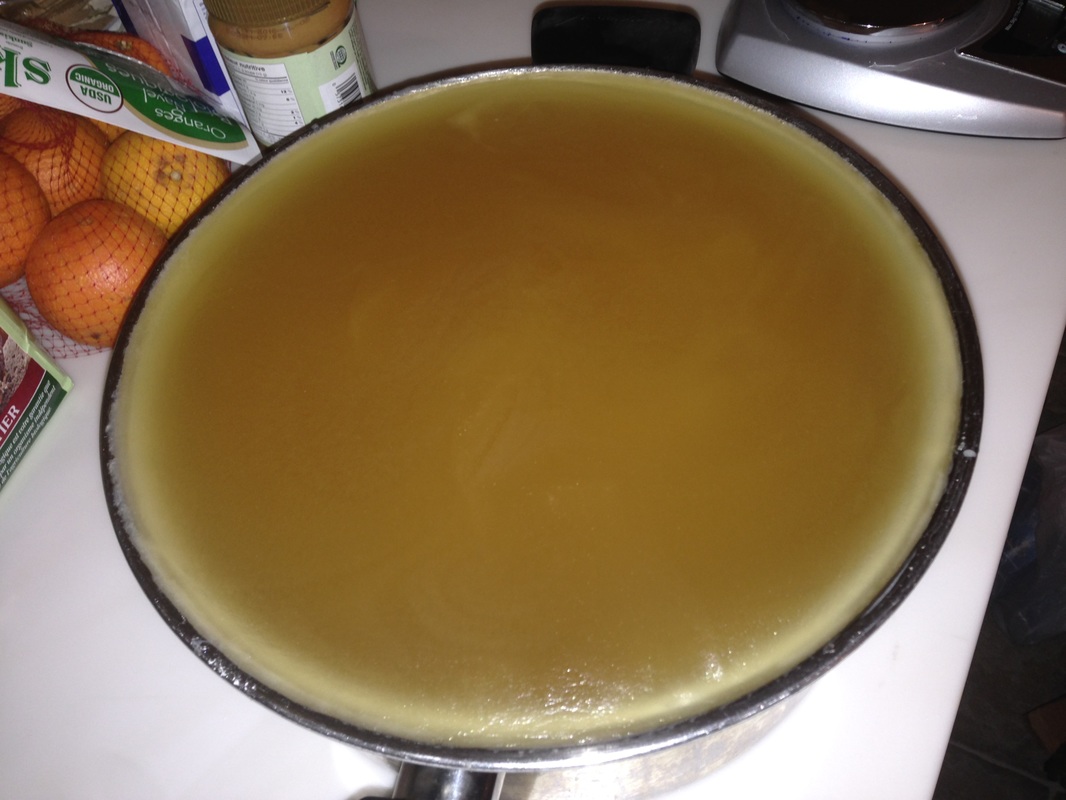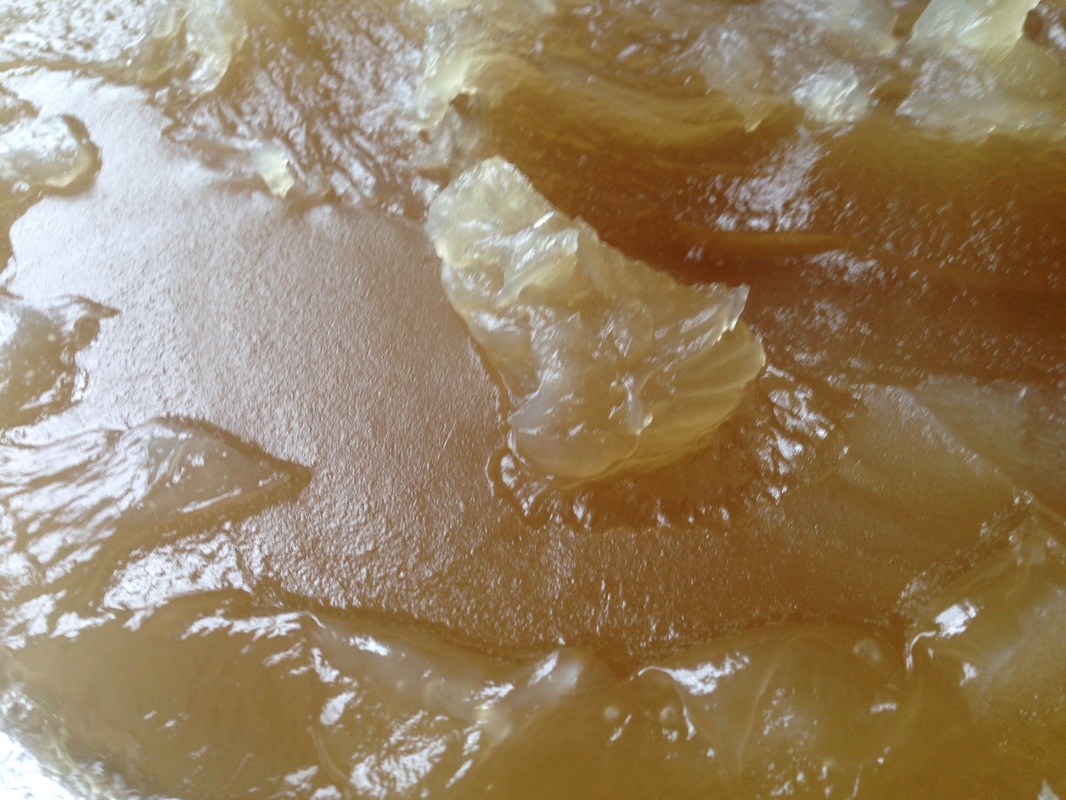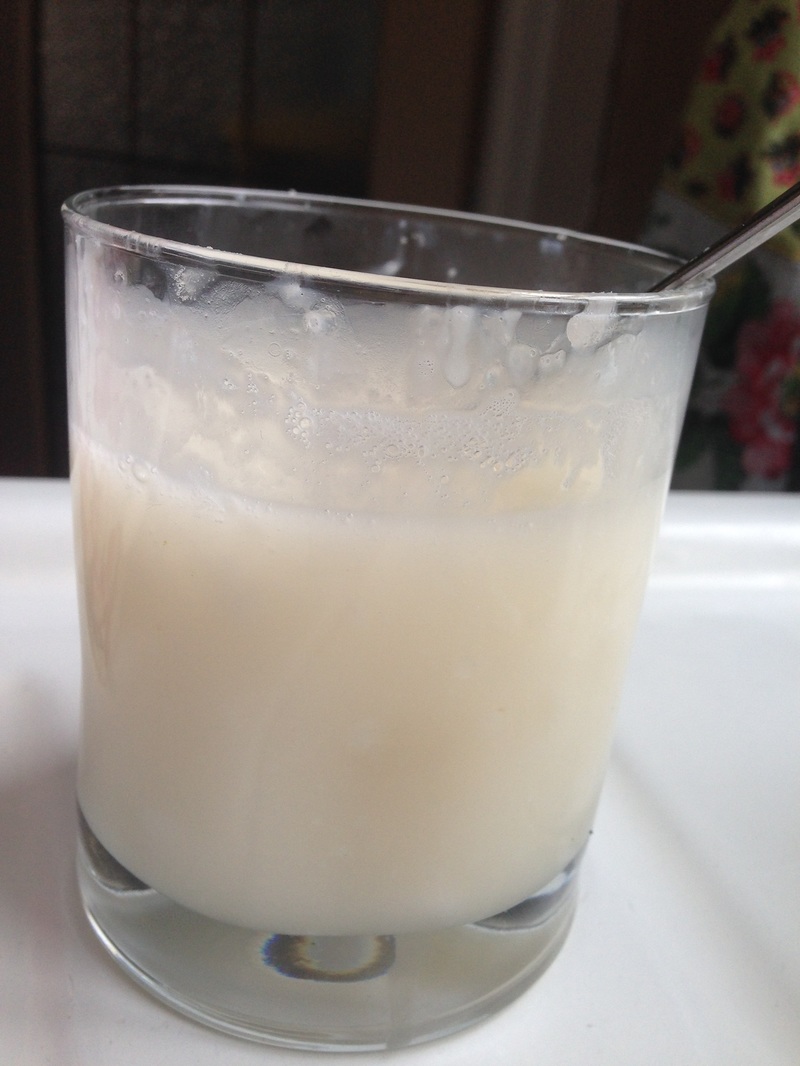But I do not like the ingredients that most liquid soap recipes consist of, which is primarily coconut oil and olive oil. Olive oil is hard to come by, that is real unadulterated olive oil that smells like olives and is green and unrefined. Coconut oil bubbles a lit and strips the oils from the skin. It is great for a mechanic's soap or laundry soap, but not for humans, in my humble opinion. And cream soaps have huge amounts of stearic acid added to them normally. Stearic acid is found in beef tallow . The commercial stearic acid is not naturally occurring either, and it is also very drying to the skin. So you get this wonderful whipped confection that smells divine and is like putting acid on the skin. Not what I had in mind.
So, I am out to make my own style of both liquid and cream soap, possibly from the same recipe. The ingredients I used are high linoleic and linolenic acid oils, which are very good for skin, some coconut for cleansing and bubbles and locally acquired home rendered lard and tallow. That should produce a liquid soap that is gentle and that still bubbles and has a creamy lather.
I did not have a big enough pot so I heated the oils and put about 90% in the largest pot I have, added the dual lye solution and a cup of organic sugar and stick blended it until it had achieved a pudding like consistency, then stirred in the rest of the oil. The lye solution and oils were hot and the sugar made the whole thing even hotter and it gelled in the pot. In traditional recipes the paste is always made by cooking the soap to a thick sticky glue like paste then it takes forever to dilute it. Why? I wondered why people are doing it that way and why not the easy way? The gelled soap paste was perfect, translucent slightly amber from the organic sugar and smooth and shiny, but not goopy and sticky like a cooked paste. Perfect.And it was saponified within 24 hours, similar to the cooking method.
It sat overnight and today I diluted some with cold tap water to see what happens. Because of the high tallow content, the soap was not clear, but a creamy white. Nice! I am going to add glycerine and whip it and see what happens. If it makes whipped soap, then perfect! If not, oh well, it does make liquid soap, a nice thick one too. I can add salt to thicken it more if I like, for a body wash. The essential oils then required are a tiny percentage of what would be used in bar soap because the soap is already finished its saponification and since it remains moist in a paste form, the evaporation is lessened greatly. Win win.
Would you like some beautiful body wash?




 RSS Feed
RSS Feed